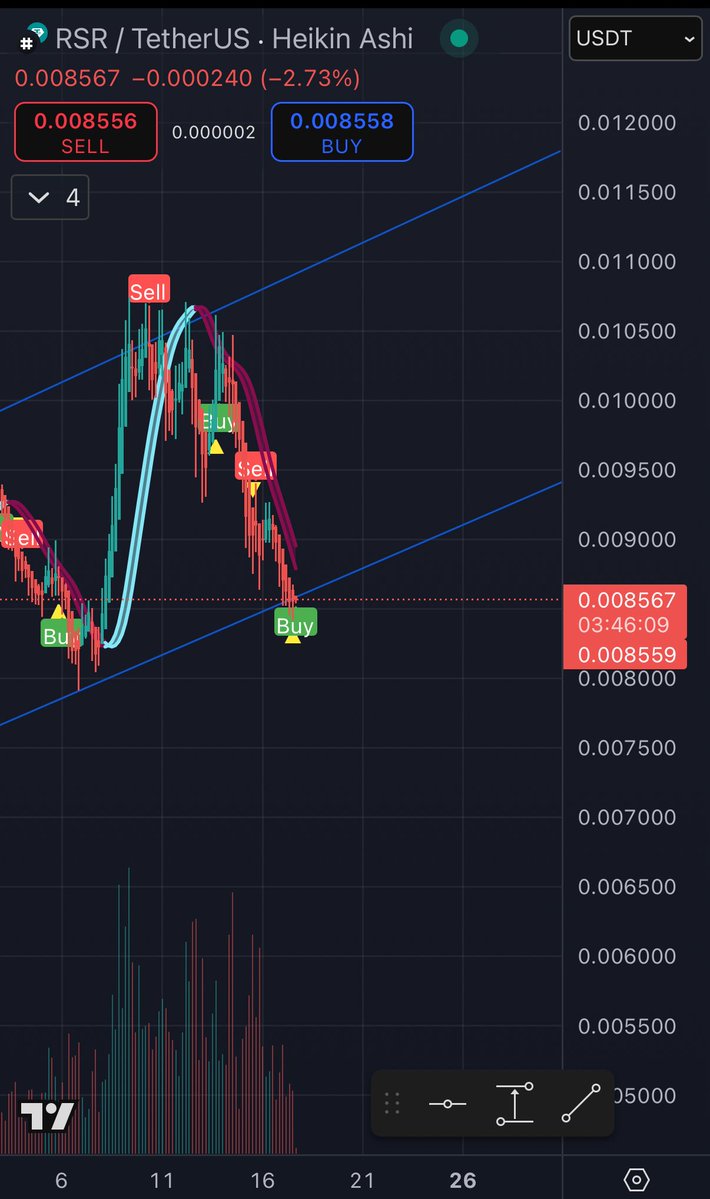Eine der wichtigsten Arten von Kryptowährungen wird Stablecoin genannt. Wie der Name schon sagt, sind Stablecoins resistent gegen die Volatilität, die anderen digitalen Währungen zu schaffen macht. Dies liegt daran, dass sie durch andere wertvolle Vermögenswerte gedeckt sind. Ihr Preis ist an Fiat-Währungen gekoppelt, wobei der USD am häufigsten vorkommt.
Ein Problem bei Stablecoins besteht jedoch darin, dass sie größtenteils zentralisiert sind. Ihr Angebot wird von einem Unternehmen kontrolliert, wie Tether im Fall von USDT oder Circle im Fall von USDC. Im Laufe der Jahre versuchte die Kryptoindustrie, eine alternative Form von Stablecoin zu entwickeln, die dezentralisiert und zensurresistent wäre. Dies führte zur Schaffung von RTokens und Reserve Rights (RSR).
Was ist Reserve Rights?
Reserve Rights ist ein dezentrales Protokoll für Asset-Backed Stablecoins. Mit einem Dual-Token-System zielt es darauf ab, stabile Münzen herzustellen, die zensurresistent sind. Der primäre Stablecoin, RSV, stellt den ersten Krypto-Token dar, während der zweite, RSR, als ERC-20-Token fungiert und zwei Rollen erfüllt. Insbesondere fungiert RSR als Governance-Token, der es Inhabern ermöglicht, Protokolländerungen vorzuschlagen und darüber abzustimmen. Darüber hinaus ist RSR von entscheidender Bedeutung für die Überbesicherung des Stablecoins RSV des Protokolls.
Das Reserve Rights-Team
Matt Elder und Nevin Freeman waren Mitbegründer von Reserve Rights. Elder, der zuvor bei Google und Quixey gearbeitet hat, fungiert jetzt als CTO von Reserve und bringt sein umfangreiches technisches Fachwissen in das Projekt ein. Als erfahrener Unternehmer leitet Freeman das Team als CEO und treibt die Vision von Reserve voran. Das 2019 gestartete Projekt verzeichnete unter ihrer Leitung ein deutliches Wachstum. Das Reserve-Team wurde auf über 200 talentierte Personen erweitert, darunter Entwickler, Ingenieure, Rechtsexperten und Compliance-Mitarbeiter.
RSR: Nativer Token von Reserve Rights
Die native Kryptowährung von Reserve Rights ist als RSR-Token bekannt. Es wurde im Mai 2019 mit einem anfänglichen Einführungspreis von 0,005 US-Dollar eingeführt. Das Projektteam hat einen Gesamtvorrat von 100 Milliarden Einheiten vorab abgebaut. Derzeit liegt der Umlaufbestand an RSR-Tokens bei 50,6 Milliarden.
Wie funktioniert Reserve Rights?
Der RSR-Token des Projekts wird als Überbesicherung der Reserve-Stablecoins durch Abstecken und Governance verwendet. Daher dient RSR als Rücksicherung, um Reserve-Stablecoin-Inhaber im unwahrscheinlichen Fall eines Ausfalls des Sicherheiten-Tokens gesund zu halten. Die einzige Möglichkeit für RSR-Inhaber, diese Überbesicherung bereitzustellen, besteht darin, ihre Token in Reserve-Stablecoin-Stake-Pools zu verpfänden. Im Gegenzug werden die Staker auf der Grundlage der Umsatzverteilung des Protokolls belohnt. Darüber hinaus wird RSR als Governance-Token für Reserverechte verwendet. Daher können RSR-Inhaber abstimmen und Änderungen innerhalb des Protokolls vorschlagen.
Anwendungsfälle für RSR-Token
Der RSR-Token dient einem doppelten Zweck: Er bietet Benutzern Möglichkeiten zum Abstecken und zur Beteiligung an der Governance. Benutzer haben die Möglichkeit, Änderungen vorzuschlagen und über Vorschläge anderer Benutzer abzustimmen. Darüber hinaus können RSR-Tokens eingesetzt werden, was eine Rolle bei der Überbesicherung der Stablecoins von Reserve Rights spielt und es den Inhabern so ermöglicht, eine jährliche prozentuale Rendite (APY) zu erzielen, die an die Anzahl ihrer Einsätze gebunden ist. Darüber hinaus kann der Token nahtlos auf dem freien Markt gehandelt werden, was Möglichkeiten zum Umtausch eröffnet.
RSR-Token-Verteilung
Reserve Rights teilte seine Token wie folgt zu:
- 49,4 Prozent des Gesamtangebots waren in einem Smart Contract namens „Slow Wallet“ zur schrittweisen Freigabe gesperrt.
- 3 Prozent wurden den Teilnehmern des Initial Exchange Offering (IEO) von Huobi Prime zugeteilt.
- 2,85 Prozent waren für das Projekt reserviert.
- 1 Prozent wurde an Privatanleger ausgeschüttet.
- 43,75 Prozent der Token wurden in Umlauf gebracht.






















